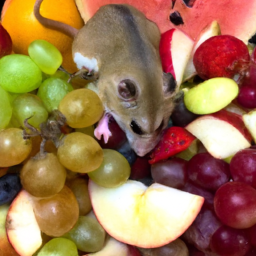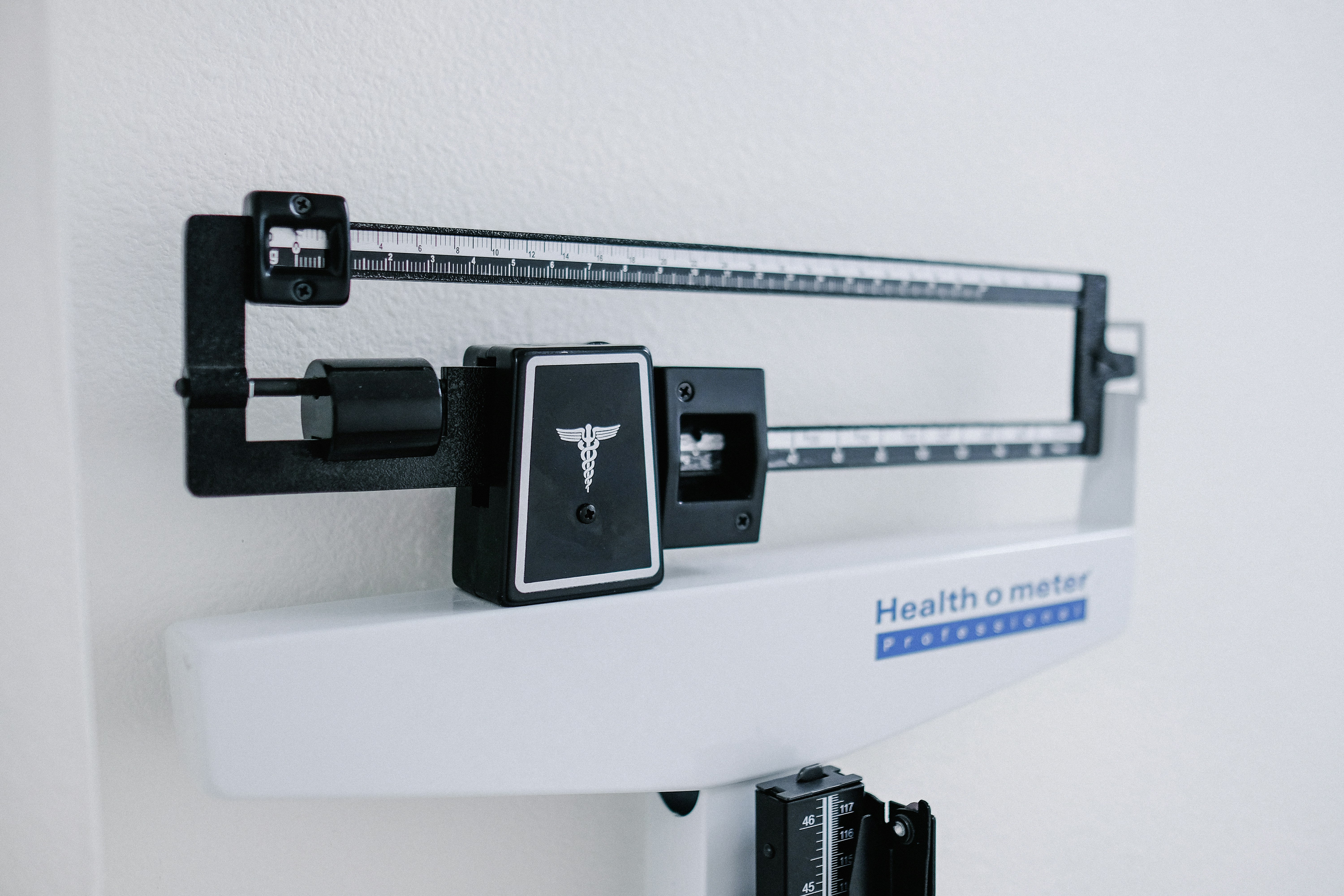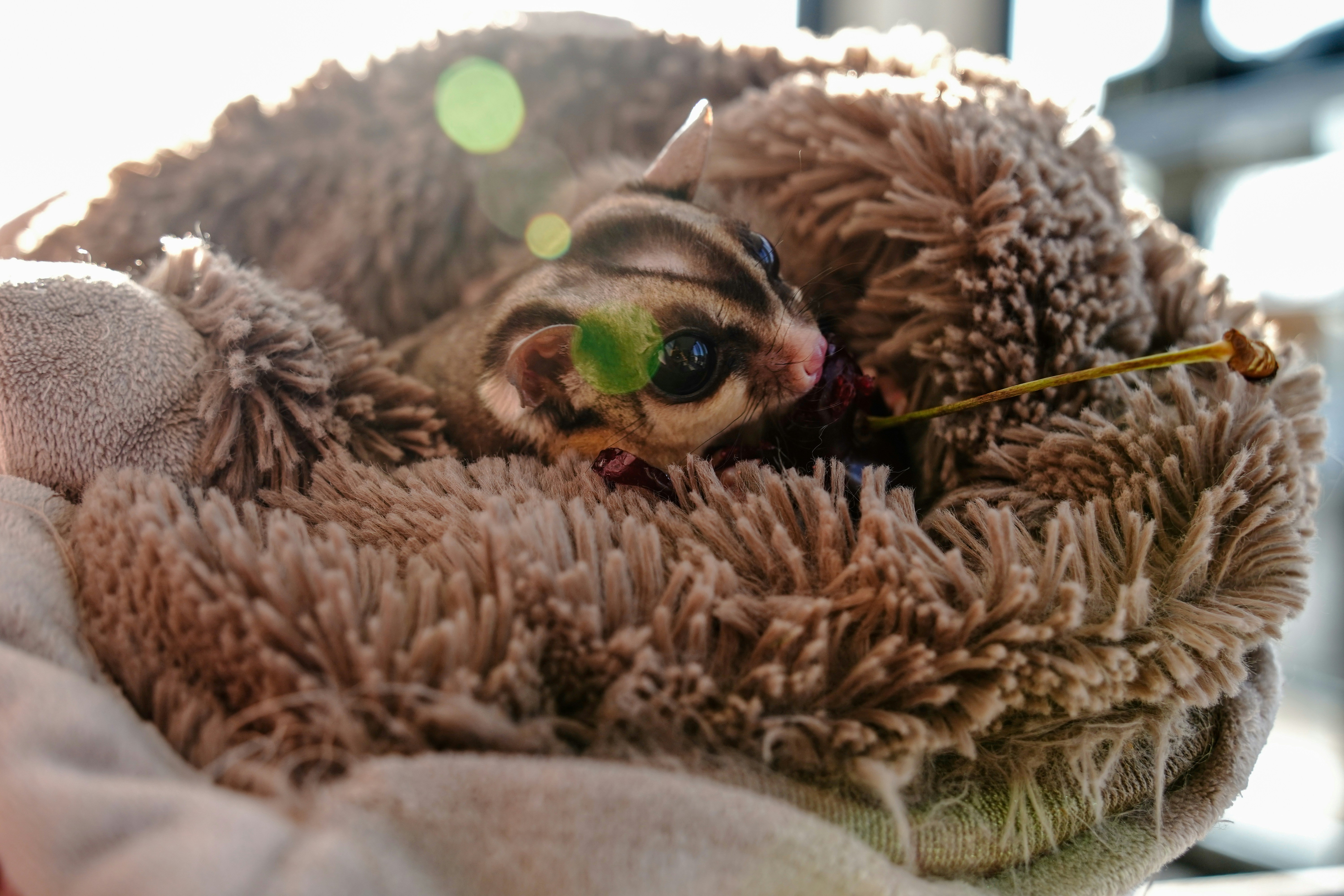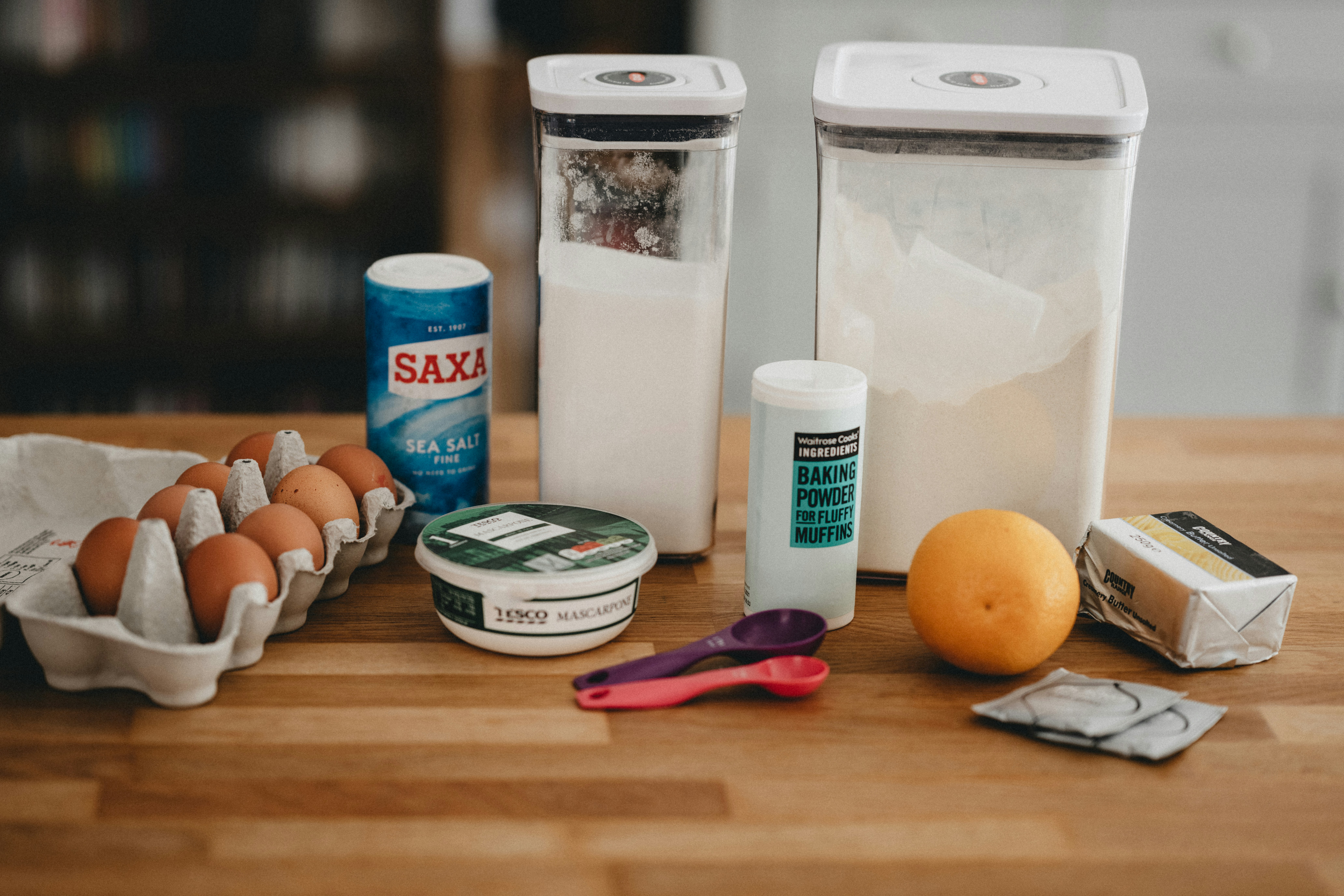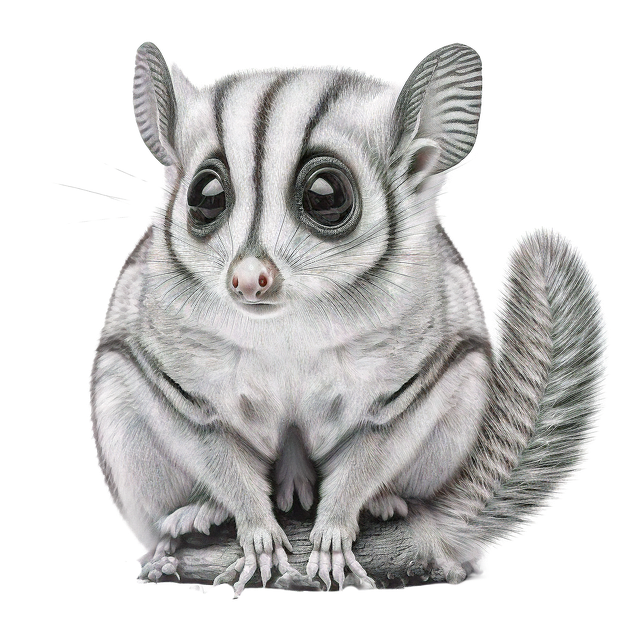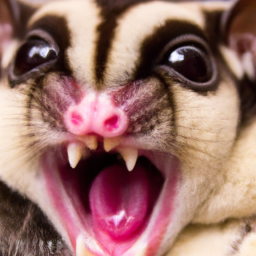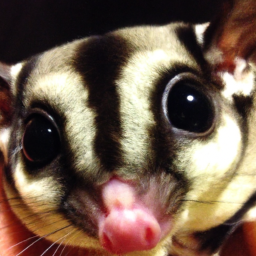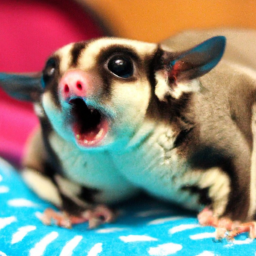What Does A Sugar Glider Eat
In this article, we will discuss the diet of a sugar glider, and you will learn about the foods they eat to stay healthy and happy. We will explore their natural diet in the wild and the recommended diet for pet sugar gliders. Additionally, we will provide some tips on how to properly feed a sugar glider and the importance of a balanced diet for their overall wellbeing. So, let’s dive right in and discover what these adorable creatures munch on!
Introduction to Sugar Gliders
Sugar gliders, also known as Petaurus breviceps, are small, nocturnal marsupials native to Australia, New Guinea, and Indonesia. These adorable creatures have a gliding membrane that allows them to glide effortlessly between trees, making them excellent climbers and jumpers. In recent years, sugar gliders have gained popularity as pets due to their energetic nature and unique appearance.
Description of Sugar Gliders
Sugar gliders are small in size, measuring about 5 to 6 inches long, with an additional 5 to 6 inches of tail. They have big, round eyes and large ears that help them navigate their surroundings. Their fur is soft and varies in color, but it is typically a combination of gray, cream, and brown. Sugar gliders are social animals and live in small groups called colonies. They communicate through a range of sounds, including chirps, barks, and hisses.
Habitat and Behavior of Sugar Gliders
In the wild, sugar gliders primarily inhabit forests and woodlands with plenty of trees for gliding and nesting. They are arboreal, spending most of their time in tree hollows or building nests using leaves, grass, and bark. Sugar gliders are highly active at night, foraging for food and socializing with other members of their colony. They are known for their acrobatic abilities, leaping from branch to branch and using their gliding membrane to travel long distances.
Nutritional Requirements for Sugar Gliders
Like all animals, sugar gliders require a balanced diet to thrive and maintain good health. Providing them with appropriate nutrition is crucial for their overall well-being and longevity.
Importance of a Balanced Diet
A balanced diet ensures that sugar gliders receive all the essential nutrients they need. Proper nutrition contributes to healthy growth, strong immunity, and reproductive success. Without a balanced diet, sugar gliders may develop deficiencies or suffer from health issues such as metabolic bone disease.
Specific Nutritional Needs
Sugar gliders have specific dietary needs that must be met to keep them in optimal health. They require a diet that is high in protein, moderate in fat, and low in carbohydrates. Additionally, sugar gliders need vitamins, minerals, and other micronutrients to support their bodily functions.
Digestive System of Sugar Gliders
Sugar gliders have a unique digestive system adapted to their natural diet. They have a short, simple digestive tract that allows for quick digestion of their food. While this is efficient for their natural diet, it means sugar gliders may struggle to digest certain foods that are not part of their natural diet.
Natural Diet of Sugar Gliders
In the wild, sugar gliders have a diverse diet consisting of various food sources. Understanding their natural diet helps in creating a suitable diet for pet sugar gliders.
Fruits and Nectar
Sugar gliders are known to feed on a variety of fruits and nectar in their natural habitat. They consume fruits such as apples, pears, bananas, and oranges. Nectar from flowers, particularly eucalyptus, is also an important part of their diet.
Insects and Small Animals
In addition to fruits, sugar gliders are opportunistic feeders and consume a range of insects such as crickets, mealworms, and moths. They may also catch small animals like spiders, lizards, and birds when available.
Tree Sap and Gum
Sugar gliders have a unique adaptation that allows them to consume tree sap and gum. They have sharp incisors that enable them to chew through tree bark and access the sap. This nutrient-rich food source provides them with additional carbohydrates and essential nutrients.
Commercial Diets for Sugar Gliders
While it is possible to provide a balanced diet for sugar gliders using commercially available products, it is essential to choose reputable brands that offer nutritionally complete options for these unique animals.
Pelleted Diets
Pelleted diets are designed to provide a complete and balanced nutrition for sugar gliders. These pellets are formulated to meet the specific nutritional needs of sugar gliders and usually contain a combination of fruits, vegetables, proteins, and essential vitamins and minerals.
Soft Food Diets
Soft food diets for sugar gliders are another option, often consisting of a mixture of fruits, vegetables, protein sources, and supplements. These diets offer a more varied texture compared to pelleted diets and are appealing to sugar gliders.
Supplements
Consideration should be given to providing additional supplements to ensure all nutritional requirements are met. Calcium and vitamin D3 supplements are typically necessary to prevent metabolic bone disease, a common nutritional disorder in sugar gliders.
Home-prepared Diets for Sugar Gliders
Some sugar glider owners choose to prepare their own diets at home. While this can be a more time-consuming option, it allows for more control over the quality and variety of ingredients.
Recipe Guidelines
When preparing a homemade diet for sugar gliders, it is important to follow established guidelines to ensure proper nutrition. These guidelines typically recommend a specific balance of fruits, vegetables, protein sources, and supplements.
Fruit and Vegetable Selection
A variety of fruits and vegetables should be included in a sugar glider’s homemade diet to provide essential vitamins, minerals, and fiber. Options such as apples, carrots, kale, and sweet potatoes are commonly included.
Protein Sources
Protein is a vital component of a sugar glider’s diet. Protein sources like cooked eggs, lean meats, and insects can be included in homemade diets to ensure adequate protein intake. Calcium supplements may also be necessary to maintain proper calcium-phosphorus balance.
Avoiding Harmful Foods
It is essential to be aware of foods that are potentially toxic or harmful to sugar gliders. Certain foods can cause digestive issues, organ damage, or even death.
Toxic Foods for Sugar Gliders
Avocado and chocolate are highly toxic to sugar gliders and should never be fed to them. These foods contain substances that can be fatal to these small animals. Additionally, onions, garlic, and caffeine should be avoided as they can also cause harm.
Food Items to Avoid
Some foods, while not necessarily toxic, can still cause digestive upset or other health issues in sugar gliders. Foods high in fat, sodium, or sugar should be avoided. Additionally, foods with additives, preservatives, or artificial sweeteners should be kept out of a sugar glider’s diet.
Unsafe Feeding Practices
Feeding sugar gliders inappropriate foods or engaging in unsafe feeding practices can have negative consequences. It is crucial to refrain from offering human food scraps, as these are often high in salt, sugar, or unhealthy fats. Feeding unhealthy treats or overfeeding can lead to obesity and related health problems.
Feeding Frequency and Portion Size
Understanding the appropriate feeding schedule and portion sizes for sugar gliders is essential to maintain their health and prevent problems such as obesity.
Recommended Feeding Schedule
Sugar gliders should be fed once a day, preferably in the evening when they are most active. Providing a consistent feeding schedule helps establish routine and allows the sugar gliders to anticipate meal times.
Determining Portion Size
Portion size varies depending on the age, weight, and activity level of the sugar glider. A general guideline is to provide around ¼ to ½ cup of food per day per sugar glider, taking into consideration the nutritional content of the diet.
Monitoring Dietary Changes
When introducing a new diet or making changes to a sugar glider’s diet, it is important to monitor their response. Some sugar gliders may require an adjustment period to adapt to new foods or textures. Any signs of distress or changes in fecal consistency should be noted and addressed.
Water and Hydration
Water plays a vital role in maintaining a sugar glider’s overall health and well-being. Adequate hydration supports digestion, organ function, and overall hydration.
Importance of Water
Providing clean, fresh water at all times is crucial for sugar gliders. Sugar gliders may not drink large amounts of water, but their water source should always be available to them.
Water Sources
Water can be provided through a water bottle or a shallow dish. If using a dish, it should be cleaned and refilled daily to ensure cleanliness. Sugar gliders may also obtain some hydration from the moisture content of their food.
Hydration Tips
To encourage hydration, especially in sugar gliders that do not drink much water, offering fruits with high water content can be beneficial. Foods such as watermelon, cucumber, or coconut can provide additional hydration.
Challenges and Tips for Feeding Sugar Gliders
Feeding sugar gliders can sometimes come with challenges, but with patience and the right approach, it can be an enjoyable experience for both the sugar glider and its owner.
Picky Eaters
Some sugar gliders can be selective when it comes to food. Introducing new foods gradually and offering a variety of options can help overcome picky eating habits. It is also important to remember that sugar gliders may prefer different food textures, such as soft foods or fruits.
Transitioning Diets
When transitioning a sugar glider to a new diet, it is recommended to do so gradually. Mixing small amounts of the new food into their current diet and slowly increasing the proportion over time can help them adjust and accept the new diet more easily.
Feeding Enrichment
Providing feeding enrichment for sugar gliders can help stimulate their natural behaviors and prevent boredom. This can include hiding food in toys or foraging puzzles, as well as offering a variety of foods for them to discover and explore.
Can A Sugar Glider’s Diet Affect How Long It Can Go Without Food?
Yes, a sugar glider’s diet directly impacts its ability to go without food. A balanced sugar glider food duration is crucial for sustaining energy levels and ensuring proper nutrition. Without the right diet, a sugar glider may struggle to go extended periods without food, leading to health issues.
Conclusion
In conclusion, a sugar glider’s diet should consist of a balanced combination of fruits, vegetables, protein sources, and supplements. Whether choosing a commercially available diet or preparing homemade meals, it is essential to meet their specific nutritional needs. Avoiding toxic or harmful foods and following proper feeding practices are crucial for maintaining their health. With the right diet and care, sugar gliders can enjoy healthy, vibrant lives as beloved pets. Remember to provide a varied diet to ensure their nutritional requirements are met, and above all, enjoy the process of feeding and caring for these delightful creatures.
